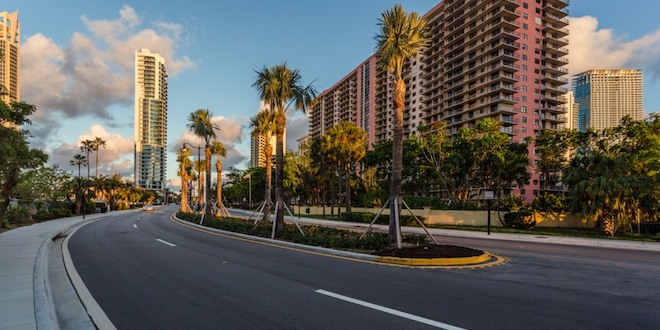By Christopher J. Russo, Former City Manager
(Tuesday, December 31, 2019) – With the evolution of technology and the environment changing globally, the City of Sunny Isles Beach is focused on preparation for a sustainable future. Since incorporation in 1997, the city is placing long-term infrastructure planning at the forefront of our priorities to ensure a viable future for our vibrant community. In past articles, I have highlighted some of our more visible capital projects, however, we also have two lesser-known, yet significant and innovative studies underway that will help determine the most pragmatic, cost-effective ways to reduce flooding in our city.
The first study, a Flood Adaptation Assessment, identifies flood vulnerabilities and what adaptive measures will be most effective. We were awarded funding through our membership with the American Flood Coalition (AFC), along with the Town of Surfside, as part of a micro-regional flood adaptation assessment with our two municipalities. Our goal is to leverage the study’s findings to plan new capital improvement projects and secure funding from the county, state and federal governments. The study is now underway, with expected completion by the end of January 2020.
Simultaneously, another little known study on stormwater retention is underway in the city. This consists of an analysis of Florida Department of Transportation (FDOT)-owned stormwater retention areas in Sunny Isles Beach. The idea here is to determine if and how the stormwater holding capacity of these retention areas can be increased. Also, through this unique initiative, we are fostering a stronger collaboration between the City and FDOT while looking at ways to problem solve across jurisdictions by evaluating maintenance schedules to assure that proper maintenance is routinely completed by FDOT.
Studies like this are important to improve our city as stormwater inlets and pipes have shown severe clogging with debris and overgrown vegetation. And inlet grates within these retention areas show excessive corrosion due to saltwater intrusion from high King Tides. The outfalls, which allow water in these basins to flow out to the bay, are not visible, even at low tide. This tells us that they are too low and these areas do not drain as quickly as they should, indicating that regrading of these areas may be necessary. We are also studying the potential for construction of additional drainage structures, deep wells or injection wells, in these multiple locations, all of which have the potential to provide a higher capacity to hold stormwater, in turn alleviating flooding on our streets more quickly.
Along with these two studies, the city is taking measures to enhance our resiliency in the years to come. We completed four major stormwater improvement projects since incorporation, are planning for the second renovation and upgrade of the Golden Shores stormwater pump station, are reducing our carbon footprint by planting more trees around the city thanks to a grant from Neat Streets Miami, and have seen more than 1,500,000 cubic yards of sand placed on the beach. Over the years, we also adopted policies, which led to the requirement of beach renourishment by developers, and revenue from impact fees. And speaking of impact fees, we may also want to look at updating and evaluating our current impact fees moving into the new decade. The grants we have received from the American Flood Coalition and the Miami-Dade County Neat Streets Program, and the numerous actions we are taking around the city are clear indications of our commitment to improve our environment in a long-term capacity.
 City of Sunny Isles Beach Official Website
City of Sunny Isles Beach Official Website
